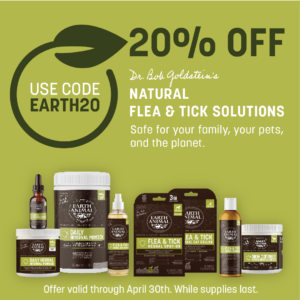With consumers increasingly voting with their wallets for businesses whose values align with their own, now is the time for the pet industry to prioritize the natural and eco-friendly movement.
In recent years, events like the pandemic, changes in climate and sea levels, natural disasters, and increased public awareness has put a spotlight on environmental concerns. People are seeking out opportunities to lead more eco-friendly, sustainable lifestyles and to contribute to the environmental care movement, and this includes business and commerce habits.
A growing percentage of consumers are opting to spend their money with retailers that align with their own personal social and environmental values. According to the Sustainability Trends in Modern Retailing report from retail consulting firm Anthesis, retailers should be using these evolving customer expectations to their advantage by adopting effective business strategies that depict an ethical and moral high ground, as well as a desire to make a positive impact on environmental and social climates.
The report found that the number of consumers deciding where to shop based on the sustainability credentials of companies is increasing. Among participants who say they prefer eco-friendly products, 80 percent said they do so because they care about the future of the planet, 62 percent reported thinking these products are better for human health, 56 percent said they like to be a part of a positive movement, and 39 percent of people believe the products to be of a higher quality.
Increasing Importance in the Industry
Consumers who prioritize environmental consciousness are investing in products that consistently enhance quality of life for themselves and their families, and this is usually not exclusive to human household members. Pet parents are also becoming increasingly aware of the benefits of shopping for sustainable brands and with retailers that offer an assortment of environmentally friendly products—of course for the planet, but also for themselves and their pets.
Millennials, who currently make up the largest percentage of pet owners, for example, are willing to pay more for pet products that are ethically sourced, BPA-free and eco-friendly than other generations, according to the American Pet Products Association’s (APPA) Generational Report. Additionally, the 2021-2022 APPA National Pet Owner Survey noted an increase in the number of pet parents specifically seeking foods sold in environmentally friendly packaging. This incline is mostly credited to the Millennial and Gen Z demographics.
“Millennials and younger generations have become keenly aware of the negative impact of business as usual on the earth’s ecosystems and communities. There is greater ownership over the responsibility to ensure the planet is habitable for generations to come,” says Ashley Lane, accreditation manager for the Pet Sustainability Coalition (PSC), a non-profit organization that works to advance business through profitable environmental and social practices in the pet industry.
“Millennials are also the first generation to have experienced childhood and adolescence with the internet and other communication platforms as we know them today. Information is more accessible than ever, and they have a better understanding of the environmental and social impacts of BAU experienced throughout the globe.”
Brent Sims, founder and brand strategist of the Baton Rouge, La.-based Owlish Agency, a creative marketing and advertising agency that serves as a consulting partner to the Independent & Neighborhood Pet Retail Association (IndiePet), says Millennial consumers are more conscious of their own consumption, as well as the ethics and waste of the individual companies. He cites exploratory research by Hubspot Inbound 19, which found that Millennials display value patterns on social media that focus on animal rights, sustainability and environmental protection.
“Millennials entering the workforce has brought new values, ideals, and knowledge of brands and their localized and global impacts,” says Sims. “Their new values are changing how brands engage and have upstreamed progress.”
Sustainability in the pet industry has certainly not always been as prominent as it is in 2022. In fact, according to Susan Goldstein, co-founder of natural pet product retailer and manufacturer Earth Animal, selling the company’s mission of protecting people, animals and the planet with a holistic approach to sustainability back in the ‘80s was no easy feat.
In their veterinary practice during the late ‘70s, Goldstein and her partner Dr. Bob Goldstein made it their mission to come up with a flea and tick prevention method that would not only do no harm to the pet, but that would also protect humans and the environment by avoiding the production of insecticides and pesticides.
Dr. Bob teamed up with a master herbalist to produce Nature’s Protection, Earth Animal’s herbal supplement product line which Susan deems the company’s “first product line to totally align with all aspects of sustainability.” She admits, though, that they found themselves relatively alone in the industry. It wasn’t the norm to raise concerns and base a product on its environmental impact, and it required a language that was not yet so widely used and understood.
Over time, sustainability has become increasingly recognized as a valid priority. People have become more exposed to and educated about ecological and environmental issues, and consumers are paying extra care and attention to companies’ respective sustainability approaches.
The pet industry specifically has seen significant growth in the sustainability space, with more companies recognizing the sustainability standards consumers are holding them to, and looking to clearly integrate sustainability into their business practices and form partnerships with brands and manufacturers with aligning values.
“Finally, it’s a lot easier and almost expected now to discuss what our sustainability efforts are as a company, because as we know, pet parents today are expecting to hear about it,” says Stephanie Volo, chief marketing officer for Earth Animal and chairwoman of PSC. “They want to support brands, retailers and companies that are sustainable—taking care of all of their stakeholders from their workers down to the end consumer.”
This heightened interest from customers doesn’t only implement a demand for pet care companies to meet, Volo suggests. It also benefits the industry in its entirety by enhancing the potential impact these companies can have. Due to its size and continued growth, the pet industry at large can position itself as a known leading player in the sustainability sphere.
Communication is Key
One common misconception that still exists throughout the pet industry is that eco-friendly and sustainable are synonymous, according to Volo. She explains that sustainability is actually much broader and goes beyond earthly effects. It also encompasses the manufacturing of products like Earth Animal’s, which prioritize not exposing pets to any material, chemical or ingredient that will adversely affect their health and wellbeing.
Since sustainability can have different meanings and be put into practice in different ways from one company to the next, it is important for pet professionals to effectively communicate with and educate their entire staff and their customer base on the company’s specific sustainable business model and its effects.
Kaitlyn Busuttil, owner of Syracuse, N.Y.-based Kloud K9, a raw and natural pet food store and IndiePet partner, says it’s important to utilize as many channels as possible to advertise, educate, and encourage word of mouth. This includes every medium at a retailer’s disposal, ranging from social media posts and blogs to door/window stickers, retail signage and other in-store displays that highlight environmentally friendly products or services.
Kristen Smith, head of consumer marketing at Earth Animal, echoes the sentiment that making the benefits of sustainable products visible is essential. She explains that Earth Animal’s product information management system provides free tools for developing effective messaging. This includes assets such as creative social media badges, sample posts and messaging guidance for things like newsletters and email marketing.
With that being said, it’s also important not to overwhelm consumers with so much information that the different sustainability practices of every pet company are lost in their minds, Lane cautions.
“Retailers can play a role in helping to pre-vet products so that they only carry products from responsible companies and/or they can educate their floor staff to be able to share more information on the environmental and social impact of the products they offer,” she says.
Know Your Sources
Lane notes that the PSC is a valuable jumping-off point for retailers looking for verified sustainable companies, as the organization works to ensure that all accredited companies complete a third party verified sustainable business assessment and reach a minimum performance standard.
“Sustainability initiatives need to align with the overall mission and ethos of the brand. You want to be able to tell a story of how you are creating a positive impact and why it matters. There are over 400 labels that can be used to make eco-claims. It is important that there is a unified message coming from brands and that the claims and certifications used support the overall mission and ethos of the brand.”
According to Cherish Morrison, senior category manager for the Mud Bay retail chain, companies need to build relationships with customers based on trust that the company is making decisions with recommendations for the health of pets, people and the environment at the top of the priority list.
“Retailers must not solely rely on the marketing materials provided to them, but also actively research health and sustainability claims to ensure the legitimacy of the benefits being highlighted,” Morrison explains.
“Membership in the Pet Sustainability Coalition is one avenue retailers have to actively engage in elevating our industry’s positive environmental impacts. As the first retailer to earn the Pet Sustainability Accredited company status our customers recognize that Mud Bay is showing up to move our collective impact in a positive direction and that is very meaningful in garnering customer loyalty.”
Sims finds that digital and social channels allow consumers to have a consistent, daily relationship with a brand. If brands provide relevant educational and beneficial information about the positive impacts of their products on the lives of pets, in addition to the environment, it is more likely brand loyalty and affinity will begin to form, he says. Entertaining, animal-related content is always an added bonus when it comes to building an online presence.
“Innovation of products provides a brand an opportunity to gain earned media (public relations) opportunities while social channels deliver a consistency to the brand’s personality,” says Sims.
“It is important to develop a social media voice and persona that speaks to the brand’s values while creating an annualized calendar that supports business objectives. The last piece of the pie is the importance of spending money inside of the social channels to ensure you are building an audience and reaching consumer segments with pet or pet product attributes.”
And, as far as Goldstein is concerned, while we live in a digital age, pet parents are still predominantly tactile, so another key practice is to conduct in-store demos that provide customers a sensorial experience that proves the superior quality of eco-friendly products.
“Open up the jar, smell it, share it with your dog,” she offers. “It’s very powerful and it’s very inexpensive, and you can do that with so many products.”
The Power of Partnership
Pet companies looking to up their sustainability game don’t have to go it alone. The industry is chock-full of partners and resources to help become more sustainable day-by-day. Smith points to organizations like PSC, with its sustainability coaching and educational programs; Repurpose Global and Plastic Pledges, which allow companies to offset use of plastics; Norrie, which helps to offset carbon usage; and the B Lab that supports and guides companies—even those who don’t make it to the full B Corp. Certification—to improve their sustainable stance.
IndiePet, which exists to support independent and neighborhood pet retailers and help them compete with the big-box and online competitors by supplying information, education platforms, marketing, network forums, events, and operational tools, also partners with the PSC to provide guidance on sustainability best practices for independent pet companies. Todd Dittman, executive director of IndiePet, suggests that retailers looking to enhance their reputation as a key player of sustainability utilize the association and its knowledge base to gain valuable insight from their peers.
The plethora of resources for sustainable practices within the pet industry is not only available to large players and chains. Volo calls attention to the fact that the PSC’s offering of educational and guiding materials are free and accessible to anyone and any time. Additionally, she says the PSC and IndiePet have joined forces to produce an entire suite dedicated to resources that businesses of any size and at any level can utilize to move forward in their sustainable journey.
Arguably the most important agreement amongst these industry professionals is that the need for sustainable practices in the pet space is a movement, not a moment, and the importance of producing and selling products that do not hinder the health of the customer, their beloved pets or the environment is only going to continue trending upward. Even in cases where shifting to more sustainable methods are costly, leaders in this market have already seen significant returns on their investments that prove the true worth of being a sustainable pet industry partner. PB







